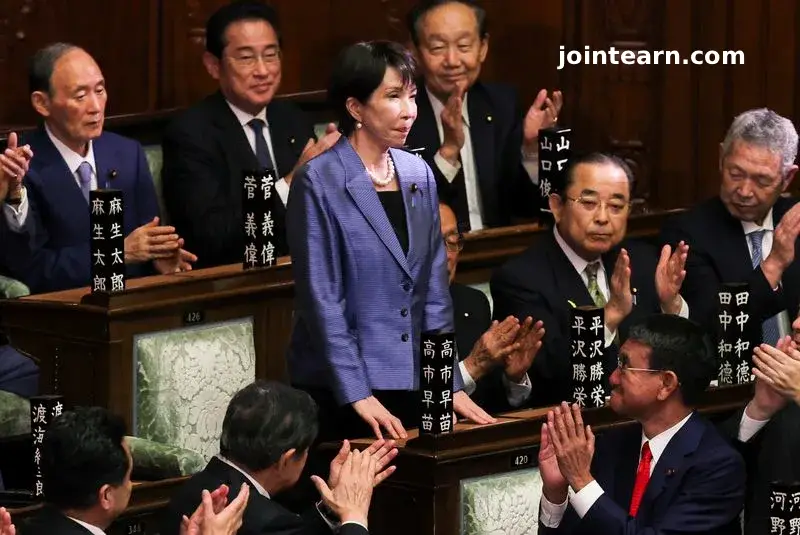
In a historic milestone for Japan, ultraconservative politician Sanae Takaichi was elected as the country’s first female prime minister on Tuesday, following weeks of political maneuvering and coalition negotiations. Takaichi, who leads the ruling Liberal Democratic Party (LDP), replaces Shigeru Ishiba, ending a three-month political vacuum after the LDP’s disappointing performance in July’s elections.
Narrow Victory in Parliament
Takaichi won 237 votes in the lower house, just four more than the required majority, defeating Yoshikoko Noda of the Constitutional Democratic Party. Her premiership was secured through a last-minute coalition with the Osaka-based Japan Innovation Party (Ishin no Kai), after the LDP’s traditional partner, Komeito, quit the coalition citing concerns over her nationalist views and party scandals.
Despite the coalition, Takaichi lacks a majority in both houses, meaning her government must negotiate with other opposition parties to pass key legislation. Political analysts warn that this fragile balance could limit her ability to implement her agenda.
Thatcher-Inspired Leadership
Takaichi has frequently cited Britain’s former Prime Minister Margaret Thatcher as a source of inspiration, praising Thatcher’s strength, convictions, and combination of leadership with “womanly warmth.” She met the late Thatcher shortly before her death in 2013 and draws parallels between their modest backgrounds: Takaichi’s mother was a police officer, and her father worked in the automotive industry.
However, Takaichi diverges from Thatcher’s fiscal conservatism. A long-time advocate of Shinzo Abe’s “Abenomics” stimulus policies, she supports higher government spending, tax cuts, and greater control over the Bank of Japan, aiming to revitalize one of the world’s most indebted economies.
Rightward Political Shift
Takaichi’s premiership signals a shift to the right in Japanese politics. Her nationalist stances include regular visits to Yasukuni Shrine, revising Japan’s pacifist constitution, and exploring a “quasi-security alliance” with Taiwan. She has opposed same-sex marriage and separate surnames for married couples, positions that resonate more with male voters than women.
Her coalition’s policy platform emphasizes strong economic measures, hawkish foreign policy, and social conservatism, while Takaichi pledges to tackle rising inflation, a priority for Japanese citizens frustrated by years of deflation.
Balancing Hardline and Personal Approach
Despite her conservative reputation, Takaichi presents a softer personal image. Former acquaintances, such as her hairdresser, highlight her attention to detail and attentiveness to people, exemplified in her signature “Sanae Cut,” designed to show she listens carefully.
Her educational background includes a degree in business management from Kobe University, followed by a congressional fellowship in the U.S. Congress. She began her political career as an independent in 1993 before joining the LDP in 1996.
Immediate Challenges
Takaichi faces multiple challenges:
- Economic: Controlling inflation, managing public debt, and maintaining investor confidence.
- Political: Consolidating power in a fragile coalition while courting additional support for legislation.
- International Relations: Balancing nationalistic policies with diplomatic sensitivity toward China, South Korea, and the United States.
- Social Policy: Navigating public expectations on gender equality, social reforms, and immigration.
She is scheduled to present her Cabinet this week, including close allies of LDP power broker Taro Aso, while Ishin no Kai ministers will wait until the coalition stabilizes.
The Road Ahead
As Japan’s first female prime minister, Takaichi’s leadership is under intense scrutiny both domestically and internationally. Observers will monitor whether she can balance her hardline conservative agenda with the economic and diplomatic realities of modern Japan, while also carving a path as a trailblazing female leader in a traditionally male-dominated political landscape.
Leave a Reply